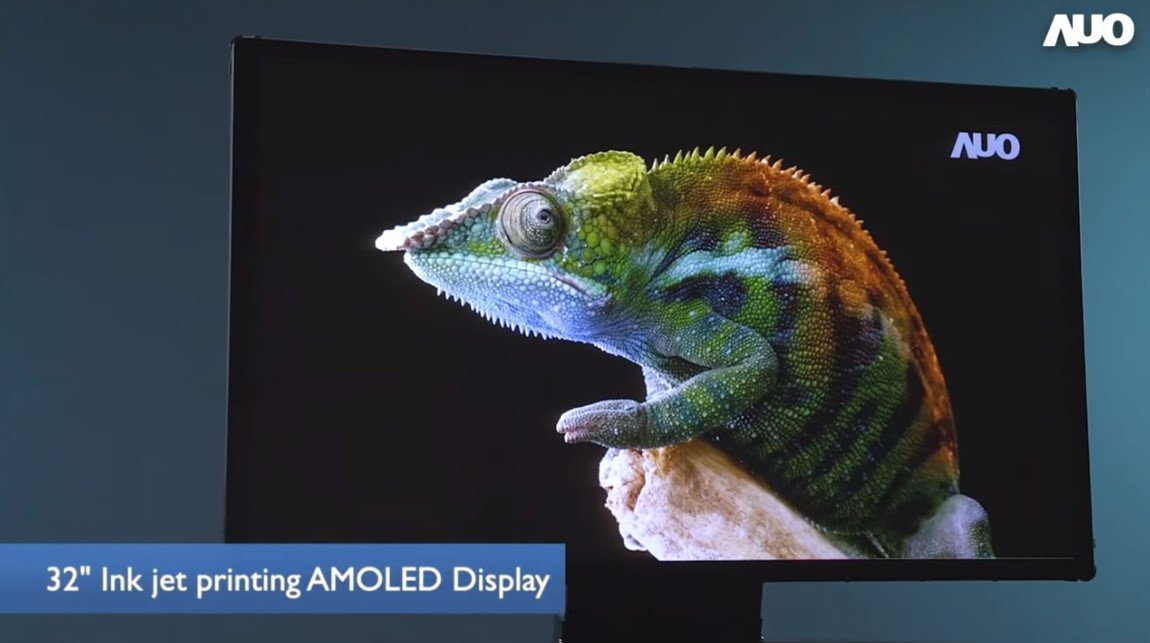Taiwanese display maker AU Optronics is getting into the inkjet-printed OLED display game and has just shown off its first prototype at SID Displayweek 2021.

The company demonstrated a 4K resolution, 32-inch OLED display with 144Hz refresh rate, and a video of the prototype has since been posted on YouTube courtesy of OLED-INFO.com.
The video was narrated by AU Optronics Senior Associate Vice President Jennifer Lin, who said that the company has been invested in inkjet printing for a long time, and that OLED’s rich colour performance makes it perfect for applications such as gaming and medical uses.
Lin further stressed the ecological benefits of OLED displays, which is something LG Display has talked about quite a lot recently. Earlier this week, LG claimed that its OLED TVs can be made using just a fraction of the plastic that goes into an LCD display. It has also said OLED TVs use a lot less power due to the lower brightness of their self-emissive panels.
It may well be that inkjet-printed OLED displays are even more environmentally-friendly than the ones made by LG. The inkjet printing process uses fewer materials because the panels are printed directly, whereas the conventional fine metal mask evaporation method perfected by LG leads to quite a bit of wastage. As such, inkjet-printed OLED panels will probably be cheaper when they come to market. Industry observors say they could be as much as 15% to 25% cheaper than traditional models of the same size.
That said, AU Optronics’ prototype is more likely designed for the gaming monitor market rather than TVs, given its smaller size and its high refresh rate.
But whatever it ends up being used for, it’s clear that inkjet-printed OLED is really gaining momentum. Earlier this year, Japanese display maker JOLED, which is a joint venture between Sony, Panasonic and Japan Display, began shipping its own inkjet-printed OLED monitor displays to customers including LG Electronics. The company, which doesn’t sell consumer products itself, lists three inkjet-printed OLEDIO-branded monitor panels on its website. They are 22-inch, 27-inch and 32-inch models that sport 4K resolution, RGB OLED pixels and 1,000,000:1 contrast ratio with a peak brightness of 540 nits.
Separately, China’s TCL has promised to start manufacturing inkjet-printed OLEDs by 2023, with TV sets to go on sale the year after.
AU Optronics also hinted at inkjet printing’s potential advantage for rollable OLED displays. A second prototype seen in the video was a 5.6-inch rollable, dual-sided AMOLED display for smaller devices that can show a different image on each side. The company also made the interesting claim that the prototype had passed a 100,000 times rolling test, which is twice as many unfurlings as LG’s rollable Signature OLED R TV is guaranteed for.
Now, if AU Optronics can just manage to scale that technology up… Who wouldn’t want a rollable OLED television that they can place in the centre of their living room to display two movies at once?